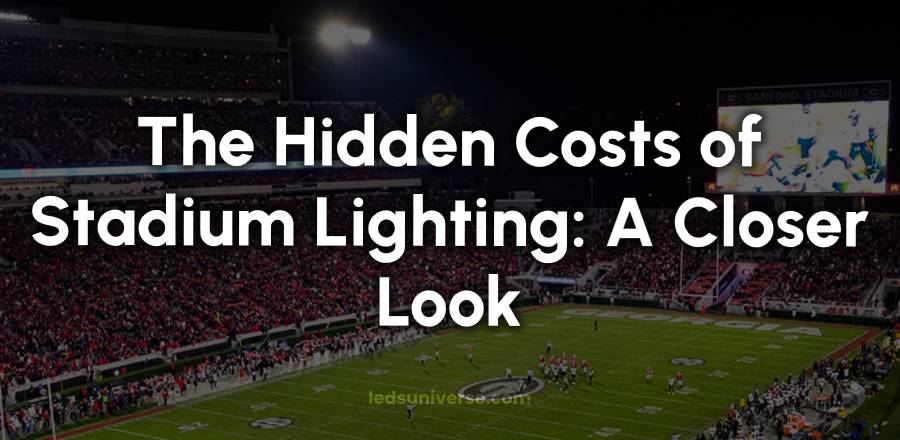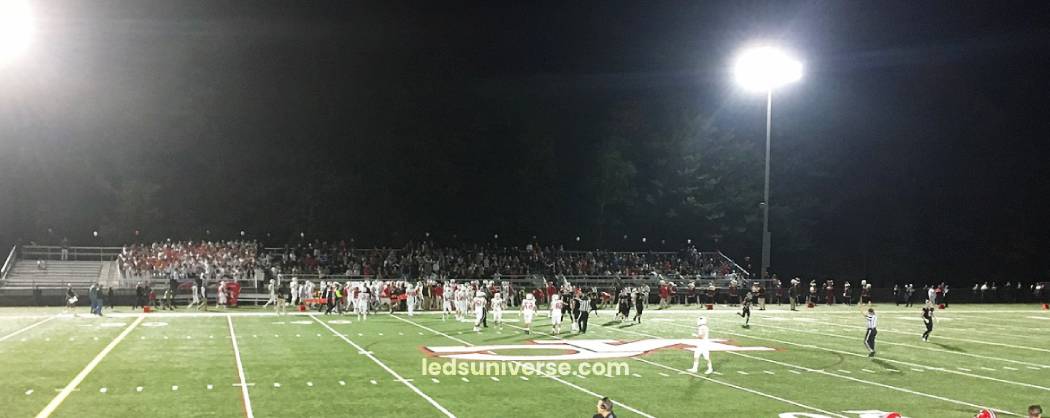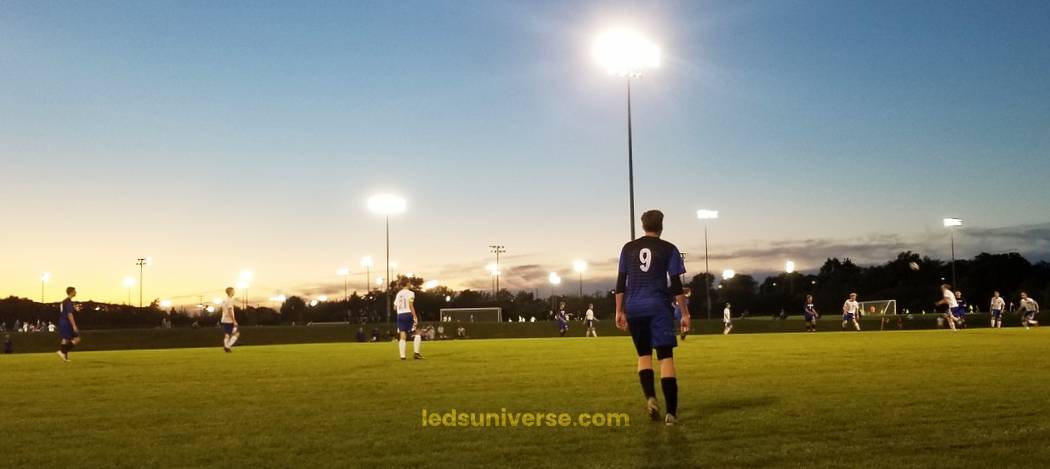
From government initiatives to private foundations, funding opportunities abound for organizations seeking to enhance their facilities. Navigating the landscape of stadium lighting grants can be challenging, yet understanding the eligibility criteria, application processes, and potential challenges can empower facility operators to secure the funding needed to create vibrant, safe, and engaging sports environments.
Modern lighting solutions, especially LED technologies, not only provide better illumination but also promote energy efficiency and sustainability. However, the financial burden associated with upgrading stadium lighting can be considerable, making grants a valuable resource for many facilities seeking improvements. Understanding the various types of grants available, the eligibility criteria, and the application process can greatly assist stadium operators in navigating this funding landscape.
Reach out for free lighting consultation
Table of Contents
ToggleAs interest in improving sports facilities continues to grow, several exclusive grant programs have emerged specifically targeting stadium lighting upgrades. These grants often come from a mix of government agencies, private foundations, and nonprofit organizations dedicated to enhancing community sports infrastructure.
| Grant Program | Funding Source | Total Allocation | Grant Range | Target |
|---|---|---|---|---|
| Community Facilities Grant Program | U.S. Department of Agriculture (USDA) | Approximately $200 million (FY 2022) | $5,000 to $50,000 per project | Rural communities to improve essential facilities |
| Sport and Recreation Infrastructure Program | Australian Government | Over $100 million (2021-2022) | Varies by project | Community sports facilities, including lighting upgrades |
| Local Sports Grants Program | Local Foundations/Community Organizations | About $1 million per funding round | Varies | Projects that increase sports access for underrepresented groups and enhance safety for youth athletes |

One prominent example is the Community Facilities Grant Program offered by the U.S. Department of Agriculture (USDA). This program provides funding for rural communities to improve essential community facilities, including sports stadiums. In the fiscal year 2022, the USDA allocated approximately $200 million for this program, with grants ranging from $5,000 to $50,000 per project. Eligible applicants must demonstrate that the project will enhance the quality of life in their communities, making it an excellent opportunity for facilities in less populated areas.
Another notable program is the Sport and Recreation Infrastructure Program in Australia, which provides funding to enhance community sports facilities, including lighting upgrades. In the 2021-2022 funding round, the program awarded over $100 million to various projects aimed at improving participation in sports. This program ensures that facilities meet current standards and can accommodate a range of activities. The funding is available for both new projects and upgrades, making it a versatile option for various facilities.
Additionally, many local foundations and community organizations may offer targeted grants for stadium lighting upgrades. For example, the Local Sports Grants Program in various states often allocates about $1 million per funding round specifically for sports facility improvements, which can include lighting upgrades. These programs often prioritize projects that increase access to sports for underrepresented groups or enhance safety for youth athletes. Organizations interested in securing these grants should actively engage with local foundations, as many offer funding opportunities tailored to specific community needs.
This engagement can include attending community meetings, networking with local leaders, and showcasing the potential benefits of lighting upgrades for local sports programs. Building relationships within the community not only improves the chances of receiving funding but also fosters long-term partnerships that can support ongoing facility enhancements.
Grant programs differ widely, and specific requirements may vary based on several factors, including the funding source, project scope, and intended community impact. Each grant program is tailored to meet different objectives and priorities, which can significantly influence the criteria that applicants must meet to qualify for funding. For instance, federal grant programs may emphasize broader national goals, such as promoting energy efficiency, enhancing public safety, or supporting community development. In contrast, state and local grants might focus more on specific regional needs, such as revitalizing underfunded sports facilities or addressing safety concerns in particular communities.
Typically, grants are available to both public and private sports facilities. Public facilities often have a broader range of funding opportunities, particularly those sponsored by government agencies. These grants may target local parks, high school stadiums, and collegiate venues. On the other hand, private organizations may also be eligible for certain grants, especially those focused on community engagement and youth sports.
Grant programs may have specific requirements regarding the size, complexity, and intended outcomes of the project. Facilities should ensure that their lighting upgrades align with the objectives of the grant, whether those are focused on enhancing community access, improving safety, or promoting energy efficiency.
Many funding programs impose limits on the amount of money that can be requested. Facilities should carefully assess the total cost of their proposed lighting projects, ensuring that they fall within the parameters set by the grant program. Additionally, applicants may need to demonstrate the ability to secure matching funds or co-investment from local organizations, showcasing community support for the initiative.
Some grants may have geographic restrictions, prioritizing projects in specific regions or municipalities. Certain funding sources aim to support underserved areas or those with limited access to sports facilities. Therefore, it is crucial for applicants to thoroughly research the grant programs available in their region and assess how their projects align with the goals of these funding opportunities.

The application process for stadium lighting grants can vary significantly depending on the specific program and the agency offering the funds. However, there are several common steps that applicants can follow to streamline their applications and improve their chances of success.
Research is the first step in the application process. Potential applicants should thoroughly investigate the various grants available, noting their eligibility requirements, deadlines, and funding amounts. Many local, state, and federal agencies offer grants, as well as private foundations and nonprofit organizations that may provide funding for sports facilities. This initial research helps identify the most suitable grants for specific projects.
Once suitable grants have been identified, the next step involves preparing the grant proposal. A well-structured proposal is crucial for convincing grantors that a project is worthy of funding. The proposal should include a comprehensive project description that outlines the goals and benefits of the lighting upgrades. Clear articulation of how the project will impact the community, enhance safety, and improve the spectator experience can make a significant difference.
A detailed budget justification is also a key component of the proposal. This includes itemizing costs for equipment, installation, and any ongoing maintenance. Applicants should ensure that their budget aligns with the funding limits of the grant and includes potential sources of matching funds. Additionally, providing a realistic timeline that outlines key milestones can demonstrate to grantors that the project is well planned and achievable.
After completing the proposal, applicants must adhere to submission guidelines specific to each grant program. This often includes formatting requirements, specific forms that must be filled out, and deadlines for submission. Following these guidelines precisely is essential, as any discrepancies can lead to disqualification.
Once the proposal has been submitted, applicants should be prepared for follow-up communications from the grantors. Many grant programs require additional documentation or clarification, so prompt responses can facilitate the review process. Additionally, successful applicants may have ongoing reporting requirements, necessitating updates on project progress and outcomes.
Examining successful grant applications can provide valuable insights for facilities looking to upgrade their stadium lighting. One notable example is the case of a local high school in a mid-sized community that successfully secured funding for its stadium lighting project. The school identified a grant program focused on enhancing community sports facilities and tailored its proposal to emphasize how improved lighting would create safer conditions for student athletes and increase community access to evening events.
The proposal included detailed plans for energy-efficient LED lighting, which would not only provide better illumination but also reduce long-term operating costs. The school demonstrated community support by gathering letters of endorsement from local sports organizations and parents, which bolstered its case for funding. Ultimately, the grant enabled the school to implement the lighting upgrade, resulting in increased attendance at events and a notable improvement in athlete safety.
Another successful example comes from a collegiate athletic program that sought funding for a comprehensive lighting overhaul in its stadium. This program applied for a state grant designed to promote energy efficiency and sustainability in public facilities. The university highlighted the environmental benefits of transitioning to LED lighting and outlined a plan for utilizing renewable energy sources to power the new system.
The proposal included a thorough budget that accounted for all associated costs and a timeline that coordinated with the academic calendar to minimize disruptions. Additionally, the athletic department worked with local businesses to secure matching funds, demonstrating strong community ties and support for the project. The successful grant application led to a state-of-the-art lighting system that enhanced the game-day experience while aligning with the university’s sustainability goals.
These case studies illustrate the importance of aligning project goals with grant criteria, demonstrating community support, and presenting a well-structured proposal. They serve as practical examples for other facilities looking to navigate the grant application process.
While stadium lighting grants offer valuable opportunities for funding improvements, applicants often encounter various challenges throughout the process. One of the primary hurdles is the competitive nature of grant funding. Many facilities vie for limited resources, which can make securing grants a daunting task. This necessitates the need for applicants to craft compelling proposals that clearly articulate the benefits of their projects and align with the specific goals of the grant program.
Another challenge arises from the complexity of project budgets. The costs associated with lighting upgrades can escalate quickly, especially if unforeseen issues arise during installation. Facilities must be diligent in their budgeting, ensuring that they account for all potential expenses, including maintenance and ongoing operational costs. This can be particularly challenging for smaller facilities with limited financial resources.
Regulatory and compliance issues can also present obstacles. Many grant programs require adherence to specific guidelines and regulations, which can vary depending on the funding source. Navigating these requirements can be time-consuming and may necessitate additional documentation or adjustments to project plans.
Post-implementation, facilities must consider ongoing maintenance and sustainability. While grant funding can facilitate initial upgrades, the long-term success of the project relies on proper upkeep and management. Facilities must ensure they have the necessary resources to maintain the new lighting systems and continue to meet any reporting requirements set forth by the grantors.
Despite these challenges, the potential benefits of securing stadium lighting grants are substantial. Facilities that invest time and effort into the application process can not only enhance their lighting systems but also contribute to improved safety, increased community engagement, and energy efficiency.
By understanding the eligibility criteria, application process, and potential challenges, organizations can position themselves for success in securing funding. The examples of successful grant applications highlight the importance of aligning projects with community needs and grant objectives. As trends in technology and sustainability continue to evolve, facilities that adapt to these changes will likely find new opportunities for funding and support.
Investing in stadium lighting not only improves the safety and experience for athletes and spectators but also fosters community engagement and promotes environmental responsibility. Through careful planning and diligent effort, stadium operators can navigate the landscape of grants, ultimately contributing to the enhancement of their facilities and the experiences they provide.